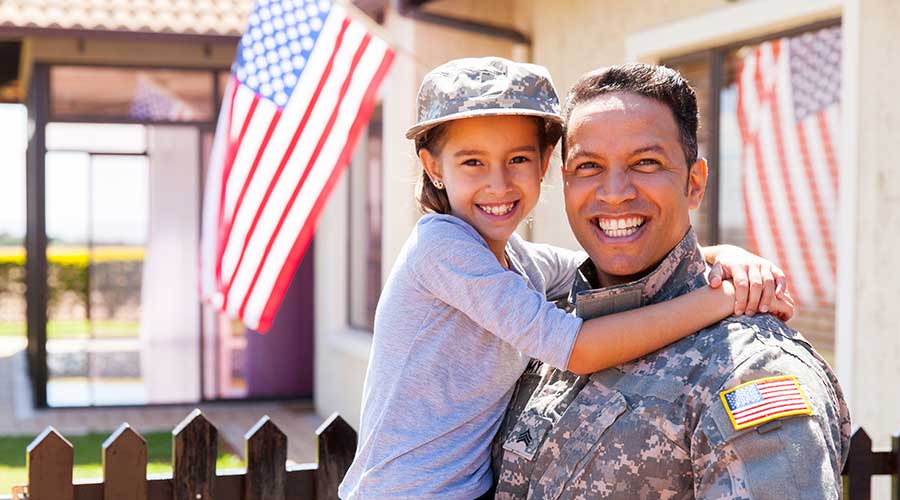Assistive technology (AT) can support socialization in many ways. It can help children interact independently with their environment and peers by providing ways to express themselves. It can also help children build friendships, explore their environment and reduce frustration that may bring about or be associated with challenging behaviors. These types of AT devices are most often labeled as visual supports or social supports.
While they may not be labeled as AT, they are included in the IDEA definition of AT devices and supports. Social skills are developed by interacting with everyone and everything in the settings where children spend time. Ensuring that the child’s environment is set up in a way that supports socialization is important. If a child is having difficulty socializing with others, observe his or her environment (and the people in the environment) to ensure that:
- The child is able to interact with toys and engage in activities. Toys placed in the child’s environment should be both age appropriate and easily accessible (not on the top shelf!). Children who cannot figure out how to play with a toy or cannot reach the toy that they want may exhibit challenging behaviors (i.e., tantruming, climbing on furniture) that can be easily remedied by changing the environment by, for example, making the toys accessible to all children.
- The environment is stimulating, but not too stimulating. Children in overly stimulating environments may have trouble focusing on one particular activity or easily become upset.
Adults attend to children when they are distressed. If a child is continuously left unattended when distressed, he/she may start to become socially withdrawn. Children in this situation learn that comfort or assistance are not available. - The child has opportunities to interact with other children/adults. Interaction is a key component of building social skills. Without it, children will miss many opportunities for learning and skill development. Rooms can be set up so that children are encouraged to interact with one another and activities can be adapted to include children who tend to go off by themselves.
- The environment and people in the environment are predictable and not chaotic. If a child doesn’t know what to expect from a person or an environment, he or she may become distressed.
The following AT devices have been developed to support socialization. These AT devices are generally lowtech and in the form of pictures and symbols.
Social Stories
Social stories are a way to teach children social skills. They describe an activity, routine, or social situation in story format using pictures, words, symbols etc. The story is told from the perspective of the child and describes, in detail, what happens during the activity, routine, or social situation with possible scenarios and appropriate responses. The story should be created using language (written, symbols, pictures) that the child is able to understand. Social stories help children understand about behavior that is expected in specific situations. Social stories also help teach the child a particular routine (similar to a schedule). Social stories can be written by the child’s parent and their provider. Older children can help contribute to “writing” the social story. Stories do not have to be solely on paper but may include sound and video as well. Depending on the child, different formats may work best.
How to write a social story:
First, decide on an activity, routine or social situation that is difficult for the child (e.g., leaving for child care in the morning). Once you’ve decided, observe the activity, routine or social situation, to identify situations that may confuse the child, what other people are doing during this time, and the child’s reactions to different situations. Make sure to take notes, video or audio recordings to help you write the story and to help the child understand the story.
Begin writing the story from the child’s perspective.
Use descriptive sentences to identify, describe, and explain the who, what, where, and why of the situation. E.g., Often my hands get dirty. Sometimes I can see the dirt and sometimes I cannot see the dirt. Use perspective sentences to describe how other people may feel or react. These sentences deal with other people’s thoughts, emotions, feelings, and mood. E.g., It makes my mom happy when I sit in the front of the grocery cart and eat my snack. Use directive sentences to let the child know what is appropriate to do in the situation. E.g., I will try to remember to wash my hands after I use the toilet.
Remember to use words like sometimes and often throughout the story – try not to use the word always because many situations do not always go as planned.
How to use a social story:
Once you have written the story, read it with the child, preferably right before the activity, routine, or social situation occurs so they know what to expect. Once you’ve read the story with the child, let him or her keep the story to read/look at while the situation is occurring. Once the child has become familiar with one story, you can start to introduce another story.
Example of a social story about washing hands From Social Stories: Making a Positive Impact on Behavior by Dottie Zimmerman (available online at http://www.txsha.org/Convention/pdf/Zimmermann,%20Dottie-Social%20Stories-Major%20Spkr.pdf):
When Should I Wash My Hands?
Often my hands get dirty.
Sometimes I can see the dirt and sometimes I cannot see the dirt.
Even when I cannot see the dirt there might still be germs on my hands.
Dirt and germs can make people sick.
It is important to wash my hands after I use the toilet and before I eat food.
I will try to remember to wash my hands after I use the toilet and before I eat food.
For more information and examples of social stories visit the following websites:
The Gray Center
http://www.thegraycenter.org/social-stories/what-are-social-stories
Background information on social stories and examples
Kids Can Dream Autism Website
http://www.freewebs.com/kidscandream/page12.htm
Examples of social stories divided into categories
Child Autism Parent Café
http://www.child-autism-parent-cafe.com/how-to-write-a-social-story.html
Background information and information on how to write a social story
Technical Assistance Center on Social Emotional Intervention for Young Children
http://www.challengingbehavior.org/explore/pbs_docs/social_story_tips.pdf
Social story tips and examples
Center on the Social and Emotional Foundations for Early Learning
http://www.vanderbilt.edu/csefel/resources/strategies.html#scriptedstories
Picture Schedules
Picture schedules are visual representations of a specific activity or routine. The steps in the activity or routine are displayed through the pictures or symbols, and are typically secured to a surface (usually with Velcro) in the order in which the steps occur. Some children may like to remove pictures of the steps once they are completed or others may leave them on. Whatever works best for the child is okay. Picture schedules help children transition by helping them anticipate what is to come. They can also help children prepare for unfamiliar activities by letting them know what to expect ahead of time. When children remove pictures of the steps, the remaining pictures illustrate what remains in an activity. This concrete representation of time may clarify time concepts for some children.
How to make a picture schedule (taken from My Day Board Idea to Share):
Gather pictures and symbols that represent activities & routines in the child’s day.
- For activities done on a daily basis gather specific pictures that represent that activity. For example, if the child goes to the same speech therapist every week, obtain an actual picture of that therapist. Cut the label out of a favorite breakfast food for breakfast. Be creative!
- For activities done every once in a while try to pick a more general picture or symbol that could represent a variety of activities. For example, a party hat and/or balloon could represent a birthday party, a neighborhood picnic or a potluck at church. In this case the picture represents a generic special event or gathering. If the child uses a communication device with a symbol based language it is a good idea to use the same symbols (with text).
Under the picture, symbol, or cut out, write the text that corresponds to the picture. Do this on a self adhesive label which can easily be attached to the picture, etc. This is a nice way to connect pictures and text.
Attach adhesive (Velcro, tape, glue) to pictures so that they can be attached to a piece of foam, cardboard, chalkboard, etc., whatever works is fine!
To use the “My Day” board, pull out the appropriate symbols for the day and place them in sequential order, left to right on the empty side of the foam board.
What will make the use of the board successful is to have it in a place that is easily accessible early in the day, i.e. near the bed, by the toilet, at the breakfast table. When talking to the child about the day ahead, point to each picture with text and discuss the day ahead.
Use the “My Day” board every morning so the child begins to expect it as part of their daily routine. Refer to the board throughout the day as to what comes next, etc.
For more information on picture schedules, visit the following links:
Do2Learn
http://www.do2learn.com/picturecards/howtouse/schedule.htm
How to build a schedule with examples.
Child Autism Parent Café
http://www.child-autism-parent-cafe.com/visual-picture-schedule-example.html
Picture schedule examples
Technical Assistance Center on Social Emotional Intervention
http://www.challengingbehavior.org/do/resources/teaching_tools/toc/folder5/5b_how_make_vis_sched.pdf
How to make a visual schedule
Feelings Charts, Posters, or Books
A feelings chart, poster, or book can help children communicate how they are feeling, even if they can’t verbalize their feelings. The chart shows different faces expressing different emotions that a child may experience during the day. The child can point to the face that best represents how he or she feels at that moment to let others know how he or she feels.
Feelings books include:
- The Kissing Hand by Audrey Penn – Helps young children understand and cope with separations
- My Many Colored Days by Dr. Seuss – Helps young children learn how to communicate about their emotions.
- Alexander and the No Good, Very Bad Day by Judith Viorst – About a little boy who is having a bad day.
- Today I feel Silly by Jamie Lee Curtis – Gives children language to talk about their moods. Also includes a feelings wheel.
For more information on feelings charts, posters, and books visit the following links:
The Kid Counselor
http://www.thekidcounselor.com/articles/how-to-make-anduse-a-feelings-chart/
How to make and use a feelings chart
Center on the Social and Emotional Foundations for Early Learning
http://www.vanderbilt.edu/csefel/resources/strategies.html#list
List of books that support social emotional development of children and activities to go along with these books
Center on the Social and Emotional Foundations for Early Learning
http://www.vanderbilt.edu/csefel/resources/strategies.html#teachingskills
Cue Cards
Emotion cue cards depict the many different emotions a young child may experience. These cards can be purchased or made with the child using index cards and markers. Faces with different emotions can be drawn on each of the cards. The child can then use these cards to express how he/she is feeling.
Cue cards can also be used to help children remember what to do during an activity or routine. If a child forgets, an adult can ‘cue’ him or her with a cue card. For quick access to cue cards, the adult can attach the cards to a key ring which can be attached to a belt loop or a bracelet. Cue cards for activities and routines can be made in the same way as emotion cue cards.
First-Then Boards
First-then boards let children know what they have to do first before they can perform a desired activity. Pictures for activities can be cut out of magazines, taken with a digital camera, drawn, etc. The first activity is placed in the “first” column. The rewarding activity is placed in the “then” column. Children can focus on what they need to do first while being able to see the reward that will come afterwards. If it’s helpful, the activity in the “first” column can be turned over once it is done. Multiple activities can be put in the “first” column depending upon the child. First-then boards are a great way to introduce picture schedules to young children.
For more information on first-then boards, visit the following links:
Hands in Autism
http://www.handsinautism.org/pdf/HowTo-FirstThen.pdf
How to make a first-then board with a template
Mrs. Riley Blog
http://mrsriley.com/blog/theresamacfarland/how-make-and-use-first-then-board
Information on first-then boards and how to make and use a first-then board
Geneva Centre for Autism
http://www.connectability.ca/connectability/library/documents/first-then-board.pdf
Additional Resources
Tips and Ideas for Making Visuals to Support Young Children with Problem Behavior by Rochelle Lentini and Lise Fox at the University of South Florida: http://www.challengingbehavior.org/explore/pbs_docs/tips_for_visuals.pdf
Teaching Tools for Young Children with Challenging Behavior from the Technical Assistance Center on Social Emotional Intervention for Young Children: http://www.challengingbehavior.org/do/resources/teaching_tools/ttyc_toc.htm
Tips and Ideas for Making Visuals to Support Young Children with Challenging Behavior from The Center on the Social and Emotional Foundations for Early Learning: http://www.vanderbilt.edu/csefel/modules/module3b/handout2.pdf
Choosing Assistive Technology
To determine the type of AT to use with a child, it is important to first understand the behavior(s) he/she exhibits and why the behavior(s) are occurring. The following are questions that can be used to guide the type of AT used.
1. Identify the problem behavior or social problem that the child is experiencing. Does the child tantrum? Does the child withdraw from peers and adults?
2. Identify the activity/routine where the behavior occurs. Is it just one in particular or does it occur throughout the day?
3. Identify the triggers of the behavior. Does it happen at a certain time each day? Does it happen around certain people?
4. Identify the purpose of the behavior. Does the child need a way to express his/her frustration? Is the child uncomfortable in certain situations and wants to escape?
5. Identify the responses that encourage the behavior. Is the child immediately given attention when he/she throws a tantrum?
Assistive Technology Ideas for Common Situations
Children are crying when their parents drop them off in the morning
- Use cue cards to help them identify their feelings.
- Read a book about separation to help them understand that their caregiver will return.
Children have trouble transition from one activity to another
- Use timers and warning signals
- Use picture schedule
- Use social story
- Use first/then schedules
Children won’t fall asleep at nap time
- Perform a soothing activity before nap time
- Have other quiet activities available for the child to do.
Children don’t sit still in their seats
- Place a box under feet for support
- Phonebook in chair with shelf liner
- Use manipulative
Children have temper tantrums throughout the day
- Use a feelings chart to help them express themselves
Children don’t line up or sit in their assigned place on the carpet
- Use feet for line up, carpet squares for circle time, mats for block structures
Sarah Yates of West Chester, PA
From Tots-n-Tech, Thomas Jefferson University, and Arizona State University, http://asu.edu/



